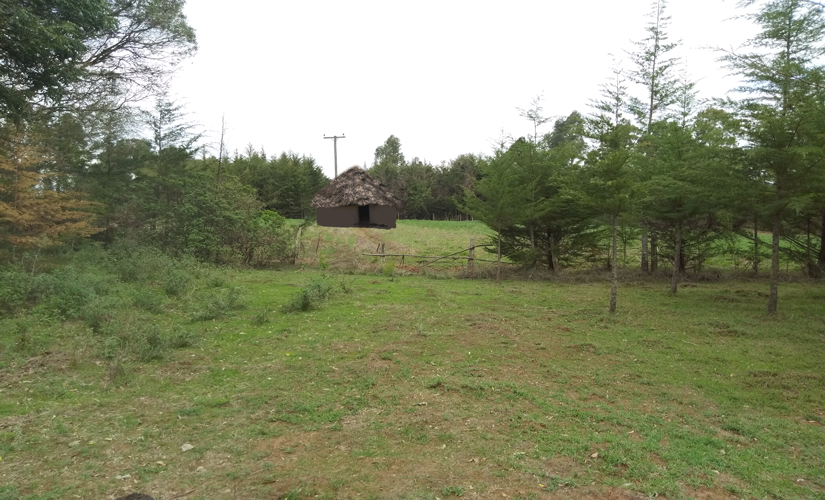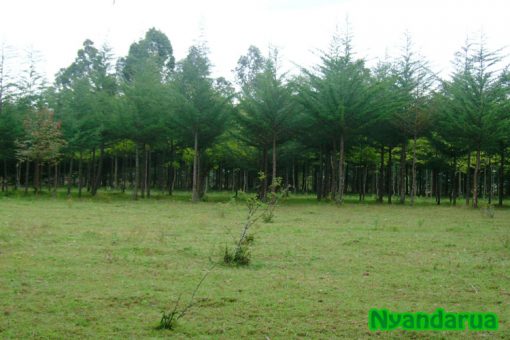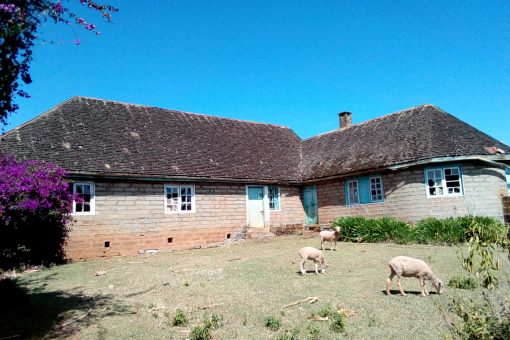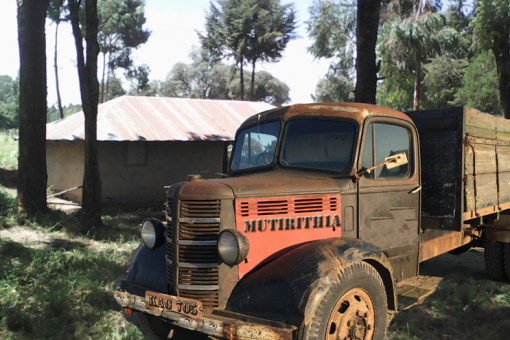Thingira or simply Kiumbu. You identified a home that had teenage boys with the extra building further away from the Main House. As boys got ready for circumcision, the initiation to manhood that broke them away from their parents house, they built themselves a Thingira, usually called kiumbu, Kikuyunized word for cubicle. Some called theirs Maskan.
The construction of a kiumbu was the first major task a young man carried out for himself: sort of a declaration of independence. If one had no brothers, he invited his friends to help with the construction. The good thing was that construction was cheap in Nyandarua using natural, locally sourced building materials. Almost everything was provided by mother nature. From a single tree borrowed from mum and dad, the boys got: Posts (itugi), limbs (mbito), Rafters (Miitiriro), Timber (mbau) for making doors, windows and their frames. In OlKalou there was some thick tall grass that grew in clusters. We called it magutu and it was ideal for roofing. Soil and Water was mixed to form a lumpy mixture ideal for plastering the walls. The only item bought from a hardware shop was nails (micumari), a negligible amount, most parents did not mind making that contribution towards their son’s construction project. With all those construction materials gathered together, it was possible to put up a Kiumbu in just one day.
The kind of Kiumbu constructed with the above materials was the one room hut that resembled the traditional Kikuyu hut, like the one in the picture above, often round in shape, mud walls and grass thatched roof, unless a young man’s father intervened and bought them iron sheets for the roofing.
The boys often sweet talked their sisters, if they had any, to plaster their kiumbu walls with munyu so it looked attractive like the Main House. This was important for their image. These boys were headed to manhood, and the kiumbu was the place they would bring their future girlfriends who, if all went well would become fiancees and eventually wives. That is why the kiumbu was so important to the young men.
Most kiumbus had intricate interior design work. The young men must have seen wallpaper on Western movies. They improvised by using newspapers to cover their mud walls. Every inch of the kiumbu walls was covered with newspapers as their wallpaper. To hold the newspapers to the wall, bottle caps of various brands of soda and beer were nailed on all the four corners of the newspaper. With no ceiling, the young men created their “ceiling”. Sisal twine was crisscrossed the entire room at the ceiling level. They collected every success card and greeting card they could find and hang them on those sisal twines.
The young men were also creative. They skillfully handmade paper crafts from the shiny aluminum paper found inside cigarette packets. These beautifully designed shiny origami like crafts were hang alongside the success cards creating a bling bling ‘ceiling’ that blocked out the view of the roof, whatever it was made of, grass or iron sheets. When you entered the cozy Kiumbu, you almost forgot you were inside a mud walled grass thatched house. They were that good, our future Architects and Interior Designers.




